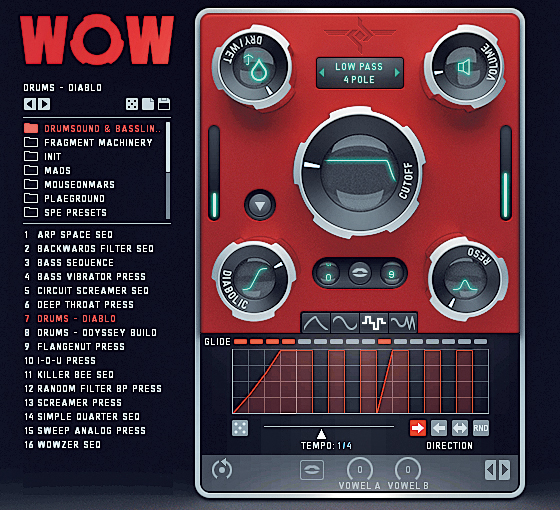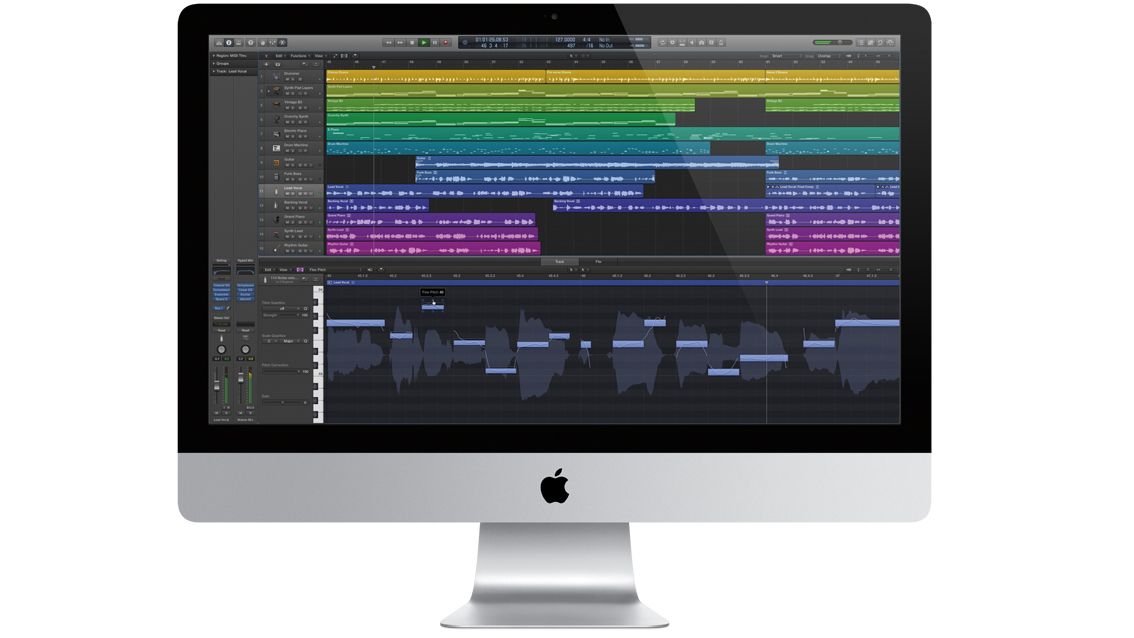The A to Z of computer music: L
L is for low-pass, latency, Logic and more

Transforming the layperson into lord of the music-making landscape, we continue our look at the essential lingo of computer music
Latency
Latency is a perennial issue with software music production systems, affecting both monitoring when recording audio and live MIDI playback of virtual instruments.
The problem can manifest as a delay between either the audio input occurring and the sound being heard from the speakers or the key of a MIDI keyboard being pressed and the target virtual instrument responding.
Latency, measured in milliseconds, is simply the result of the host computer and its audio interface processing the incoming signal, which necessarily takes a certain amount of time.
This processing is done within a buffer, the size of which can be adjusted via a software control panel to reduce latency at the expense of stability (in the shape of clicks, pops and other artifacts being introduced at overly small buffer sizes).
As long as you keep your latency below 10ms, you shouldn't have any trouble playing virtual instruments, while most audio interfaces include a 'direct monitoring' option that passes the input straight to the output for zero-latency monitoring, albeit without the option of monitoring through plugin effects.
Legato
Italian for 'tied together', legato is both a performance technique and a setting on many soft synths.
Want all the hottest music and gear news, reviews, deals, features and more, direct to your inbox? Sign up here.
Playing legato simply means to play a series of notes contiguously with no gaps between them. It differs from portamento - which also involves playing a contiguous series of notes - in that the pitch doesn't slide from note to note.
On a synthesiser, activating the legato setting tells it not to retrigger the amp envelope (and sometimes other LFOs/ envelopes) until all keys are released.
Level
In basic terms, the level of an audio signal is simply its volume, or a little more precisely, the 'height' of its waveform. However, the word can be applied to any variable parameter, even if not always entirely accurately - 'filter cutoff level' or 'envelope attack level', for example.
LFO
Low Frequency Oscillator. Featured on any virtual synth or sampler worth its salt, as well as many effects plugins, an LFO is an oscillator that outputs a waveform oscillating at (usually) a sub-audible frequency - up to around 20Hz. The waveforms on offer are generally of the standard sine/square/saw/triangle variety, and the depth of the modulation will be controlled by its own setting.
LFO signals can be used to modulate all manner of target parameters, including filter cutoff frequency, oscillator pitch, envelope depth… whatever the instrument/effect designer sees fit to include. Perhaps the most recognisable LFO-based sound of modern times is the wobbled dubstep bassline.

Limiting/limiter
When a digital audio signal exceeds 0dBFS when reaching the outputs of a digital (ie, software) mixer, the waveform's peaks are clipped, resulting in unpleasant artifacts.
Limiting (applied via a dynamics plugin called a limiter) can alleviate this by preventing the signal exceeding a user-defined level. Limiting is really just fast-attack compression to a very high ratio (up to infinity:1, which is called 'brickwall limiting'), so as well as serving as a preventative measure, it can also be used creatively to reduce the dynamic range of a signal or mix.
Linear-phase EQ
Standard digital EQs - and all analogue EQs - don't only adjust the relative levels of frequencies within a signal; they also adjust the phase of those frequencies, meaning that some frequencies get pushed further back in time than others.
In most cases, this is not audible, and it's certainly never held anyone back from making a good mixdown. Still, it can be a concern with certain types of signals (eg, those with sharp transients), mastering or when performing parallel processing.
A linear phase EQ is one that does not affect the phase of the frequencies in a signal. The tradeoff is that such EQs tend to use more CPU and they introduce latency and preringing, which is a bit like a tiny reverse reverb preceding sonic events.

Line level
A range of standardised audio signal levels used for passing signals between consumer (hi-fi, TV, games consoles, etc) and professional (audio interfaces, mixers, etc) equipment.
For consumer (unbalanced) gear, the nominal line level is -10dBv, while for professional (balanced) gear it's +10dBv. Line level is much higher than the levels of signals from microphones and guitars, which have to be amplified to line level to become usable in the studio.
Linux
An increasingly popular alternative to Microsoft's Windows and Apple's Mac OS X operating systems, Linux is a free and open source Unix-like OS. There are many versions of it (called 'distributions' or 'distros') available, including the extremely popular Ubuntu, which is designed with consumers and 'creatives' in mind.
Numerous DAW, audio editing and other music applications are available for Linux, which also offers various systems for incorporating VST plugins. While it wouldn't be true to say that Linux is 'more powerful' than Windows or OS X for music production, everything running in it is completely free, so it's certainly a great option for many musicians, cash-strapped or not.
Logic Pro
Currently at version 10 (or X), Apple's Mac-only DAW has a long and illustrious history. Originally developed and owned by German company Emagic (with ancestry tracing back to C-Lab Notator on the Atari ST in the 80s), Apple bought that company in 2002 with the primary intention - it's always been speculated - of putting its developers to work on the hugely successful GarageBand.
Despite persistent rumours of its imminent abandonment, Logic has been actively (if slowly) developed ever since, with this year's upgrade to Logic Pro X being one of its most radical yet, featuring a complete overhaul of the GUI, the impressive Drummer virtual drummer and a brand new collection of excellent MIDI effects.
Logic Pro X is one of the most powerful DAWs on the market, yet also - thanks to Apple's general enormity - one of the most affordable.

Look-ahead
Found on many dynamics plugins (compressors, limiters and gates), look-ahead enables the processor to 'see into the future' in order to facilitate ultra-fast attack times (down to 0ms).
Rather than actually reading ahead of the current playback position, however, look-ahead splits the input signal into two, one of which is delayed. The non-delayed signal is then fed into the compressor to trigger its envelope, while the delayed signal is the one that actually gets processed. This delay has to be countered by plugin delay compensation in the host DAW.
Loop
Both a noun and a verb, 'loop' can either refer to an audio sample edited so that its end runs into its beginning seamlessly on repeated playback, or the process of cycling a section of music in a DAW or audio editor) so that it, too, repeats seamlessly.
Sampled loops have been a cornerstone of modern music since the dawn of the sampler, when classic breakbeats were looped up to serve as the rhythmic base for hip-hop, breakbeat, drum 'n' bass, pop and numerous other styles. Since then, pretty much all genres have incorporated loops to some extent, and an entire industry has developed around producing and selling them.
While any audio file cut to a musically logical length for repetitive playback qualifies as a loop, a few formats exist specifically to be looped, automatically following changes in tempo (and, in some cases, pitch) in a compatible host DAW. These include Acidized WAV, Apple Loops and REX files.
Lossless compression
The process of converting a WAV or AIFF file to a compressed format like MP3 or OGG involves losing an amount of psycho-acoustically negligible data. Known as 'lossy' compression, this can reduce file sizes by a factor of up to around five with no apparent reduction in quality.
Lossless compression (in formats like FLAC and Apple Lossless) uses linear prediction to compress files by a factor of around two with no loss in quality - audible or otherwise.
Loudness
Defined by the American National Standards Institute as "that attribute of auditory sensation in terms of which sounds can be ordered on a scale extending from quiet to loud", loudness is about more than just amplitude level - it's largely a psychoacoustic property, determining how impactful a piece of music feels as well as sounds.
Maximising loudness is a prime consideration for many of today's producers, particularly at the mastering stage, although the broadening of dynamic range seems to be making a bit of a welcome comeback at present.
Low-pass filter
A filter type that attenuates all frequencies below a user-set cutoff point. The low-pass is perhaps the most ubiquitous of filter types and certainly the most sonically recognisable when swept from closed to open, creating the rising 'underwater' sound made famous by tracks such as Fatboy Slim's Rockafeller Skank.
Computer Music magazine is the world’s best selling publication dedicated solely to making great music with your Mac or PC computer. Each issue it brings its lucky readers the best in cutting-edge tutorials, need-to-know, expert software reviews and even all the tools you actually need to make great music today, courtesy of our legendary CM Plugin Suite.
